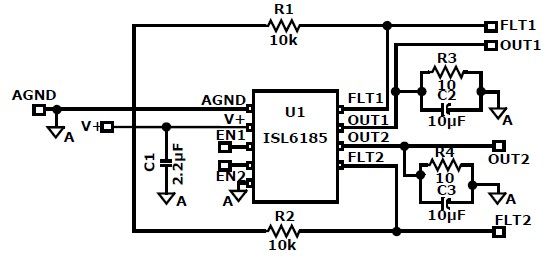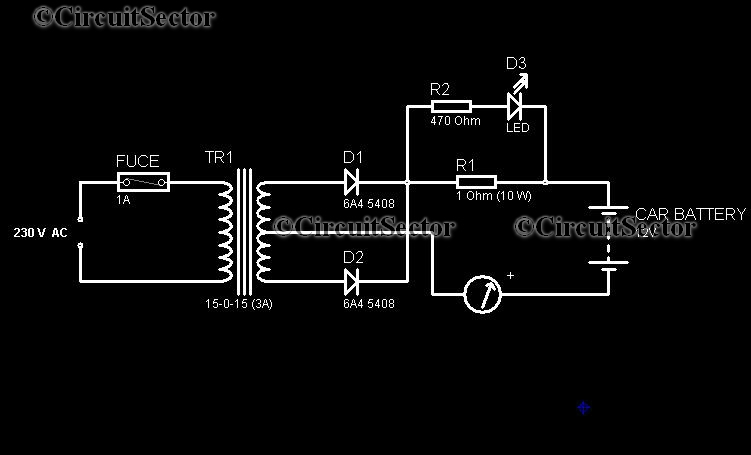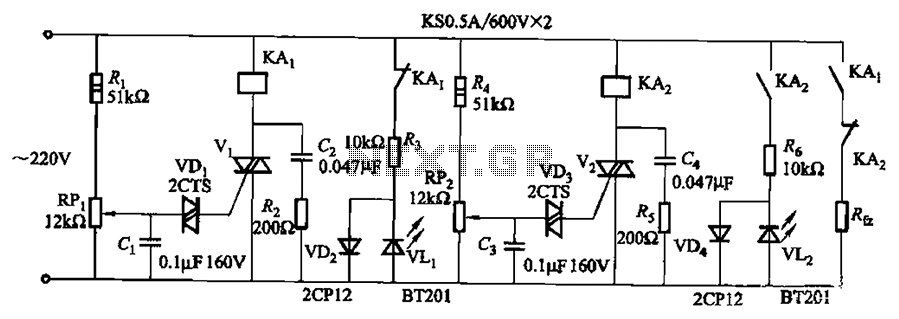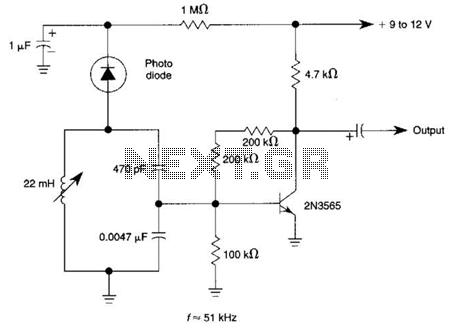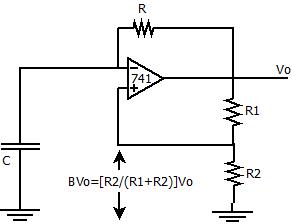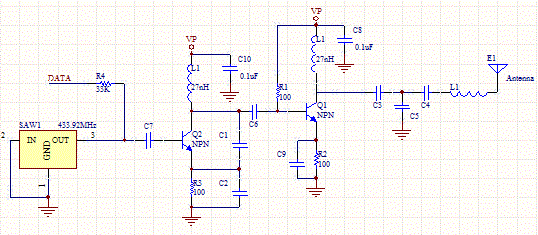
Using ADC 0808-ADC 0809 circuit chip consisting
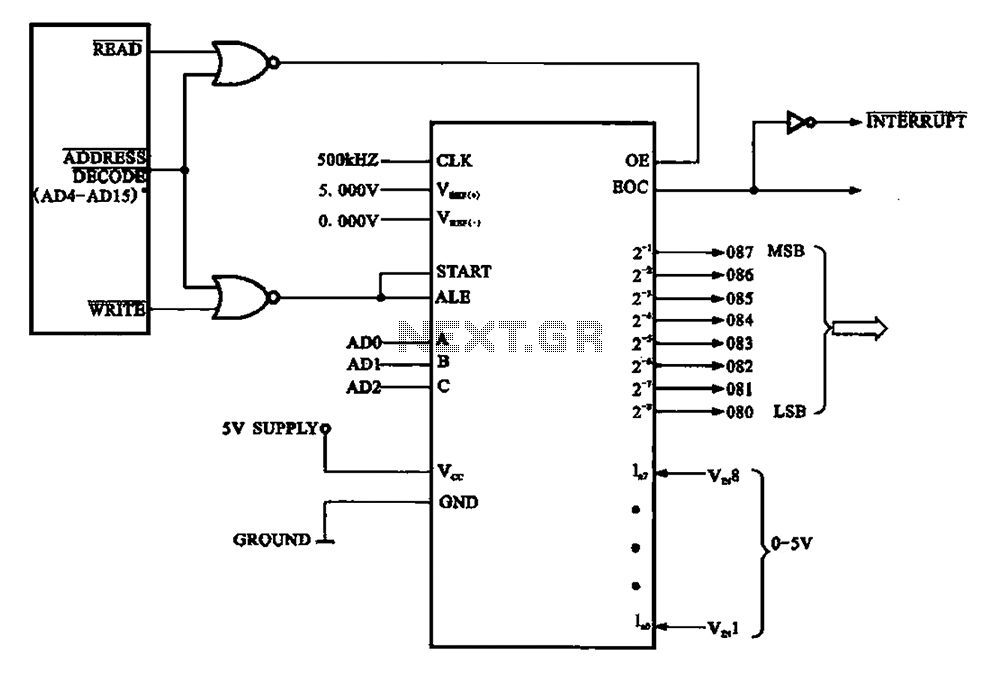
An A/D conversion circuit is designed to convert analog voltage into a digital signal encoding circuit. It utilizes ADC0808/ADC0809 circuit chips, which can convert analog signals into an 8-bit digital output signal.
The A/D conversion circuit employs the ADC0808 or ADC0809 integrated circuits, which are capable of converting an analog input voltage within the range of 0 to V (where V represents the maximum input voltage) into an 8-bit digital output. The ADC0808/ADC0809 chips are particularly suited for applications requiring high-speed conversions and are widely used in various electronic systems that need to process analog signals.
The operation of the A/D conversion circuit begins with the analog signal being fed into the ADC chip. The analog voltage is sampled and held by an internal sample-and-hold circuit, which stabilizes the input signal for accurate conversion. The ADC then quantizes the analog signal into discrete levels, corresponding to the 8-bit digital output. This means that the analog signal is divided into 256 distinct levels (2^8), allowing for a range of digital outputs from 00000000 to 11111111 in binary form.
The ADC0808 features a multiplexed input system, allowing multiple analog signals to be fed into a single ADC chip, while the ADC0809 includes a built-in comparator for applications requiring additional functionality. Both chips operate using a simple control interface, typically involving a clock signal and control lines to initiate the conversion process and read the output data.
The output from the ADC can be interfaced with microcontrollers or digital signal processors (DSPs), enabling further processing, analysis, or display of the converted data. This A/D conversion circuit is essential in applications such as data acquisition systems, audio processing, and sensor interfacing, where accurate digital representation of analog signals is crucial for system performance.A/D conversion circuit is to convert the analog voltage into a digital signal encoding circuit, is shown in FIG using ADC0808/ADC0809 circuit chips, which can be O ~ V convert analog signals into 8-bit digital output signal.
The A/D conversion circuit employs the ADC0808 or ADC0809 integrated circuits, which are capable of converting an analog input voltage within the range of 0 to V (where V represents the maximum input voltage) into an 8-bit digital output. The ADC0808/ADC0809 chips are particularly suited for applications requiring high-speed conversions and are widely used in various electronic systems that need to process analog signals.
The operation of the A/D conversion circuit begins with the analog signal being fed into the ADC chip. The analog voltage is sampled and held by an internal sample-and-hold circuit, which stabilizes the input signal for accurate conversion. The ADC then quantizes the analog signal into discrete levels, corresponding to the 8-bit digital output. This means that the analog signal is divided into 256 distinct levels (2^8), allowing for a range of digital outputs from 00000000 to 11111111 in binary form.
The ADC0808 features a multiplexed input system, allowing multiple analog signals to be fed into a single ADC chip, while the ADC0809 includes a built-in comparator for applications requiring additional functionality. Both chips operate using a simple control interface, typically involving a clock signal and control lines to initiate the conversion process and read the output data.
The output from the ADC can be interfaced with microcontrollers or digital signal processors (DSPs), enabling further processing, analysis, or display of the converted data. This A/D conversion circuit is essential in applications such as data acquisition systems, audio processing, and sensor interfacing, where accurate digital representation of analog signals is crucial for system performance.A/D conversion circuit is to convert the analog voltage into a digital signal encoding circuit, is shown in FIG using ADC0808/ADC0809 circuit chips, which can be O ~ V convert analog signals into 8-bit digital output signal.
